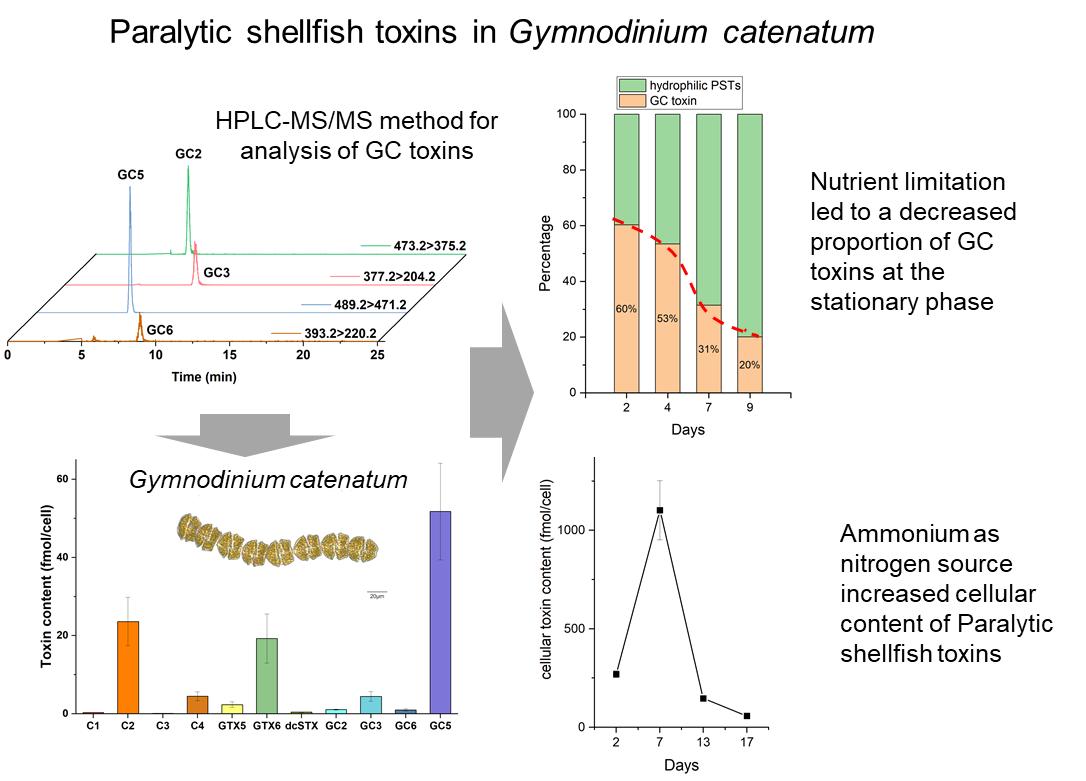Dinoflagellate Gymnodinium catenatum is an important producer of paralytic shellfish toxins (PSTs), a group of neurotoxic alkaloids responsible for paralytic shellfish poisoning (PSP). A novel group of PSTs with hydroxybenzoate side chain in G. catenatum has been revealed in 2003, named as G. catenatum toxins (GC toxins), and GC toxins are likely to pose a high threat to human health.
In the East China Sea, G. catenatum has been considered as the causative agent for several PSP episodes, yet knowledge on their toxin production features was still quite limited.
Recently, the research team on harmful algal blooms and marine ecological security led by Prof. YU Rencheng from the Institute of Oceanology of the Chinese Academy of Sciences (IOCAS) revealed the toxin production feature of G. catenatum isolated from the East China Sea.
The study was published in Harmful Algae.
Toxins produced by a strain of G. catenatum isolated from the East China Sea were determined using high performance liquid chromatography coupled with tandem mass spectrometry (HPLC-MS/MS) method. Total PST components dominated by hydroxybenzoate analogs GC toxins and N-sulfocarbamoyl toxins were detected, which revealed a different toxin profile from other G. catenatum strains previously established in the East China Sea.
Then researchers examined the toxin production features of this strain in response to environmental variations. Toxin content of the G. catenatum strain had no apparent response to the variation of temperature and nutrients, but the nutrient limitation and source of nitrogen had notable impacts on toxin production. GC toxins decreased remarkably at the stationary growth phase under nutrient-deprived conditions.
The replacement of nitrate with ammonium as the source of nitrogen significantly promoted PST production by G. catenatum. High concentration of ammonium has toxic effects on dinoflagellates, and the excessive ammonium would be used for synthesis of PSTs to release its toxic effects.
"The study revealed the potential diversity of toxin profiles of G. catenatum in the coastal waters of China, and highlighted the risks of toxic G. catenatum bloom in the mariculture zone of Fujian province in the East China Sea," said Prof. YU.
This work was supported by the Ministry of Science and Technology and National Natural Science Foundation of China.

Toxin production of Gymnodinium catenatum isolated from the East China Sea in response to nutrient variations
Lin ZR, Geng HX, Zhang QC, Chen ZF, Dai L, Yu RC*. (2022). Toxin production of dinoflagellate Gymnodinium catenatum isolated from the East China Sea. Harmful Algae, 113: 102188.
GENG Huixia, YU Rencheng
Institute of Oceanology
E-mail: hxgeng@qdio.ac.cn; rcyu@qdio.ac.cn
(Editor: ZHANG Yiyi)

